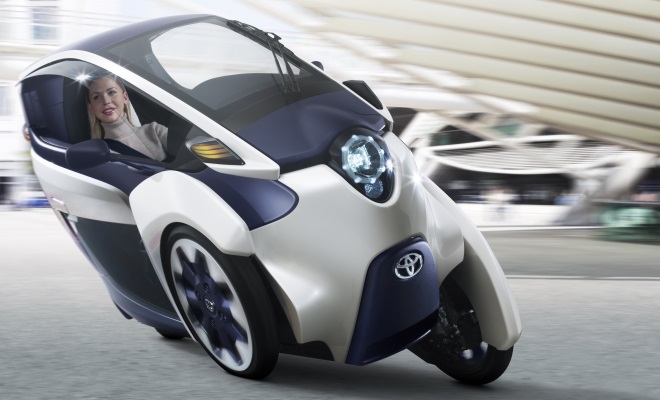
I had planned to visit the Geneva motor show earlier this week, but human frailty intervened. Instead of wandering the halls peering at shiny cars, I spent the day swallowing cough syrup and sneezing at the television.
That meant I missed catching up with a few cars that I really wanted to see first-hand.
As usual, the show provided a host of innovations of GreenMotor interest, from the extremely strange – I’m thinking of Toyota’s three-wheeled electric scooter-pod thing – to the wholly sensible – step forward the new BlueInjection diesel engine that will no doubt soon power the most environmentally friendly Vauxhall Astra we’ve yet seen.

The car I most wanted to see was the low and slippery Volkswagen XL1, which graced the VW stand in an eye-catching metallic red finish. Despite appearing to be a car deposited directly from the future by a whirling wormhole of temporal distortion, the XL1 reportedly didn’t merit a mention in the main Volkswagen press conference. Instead, the focus fell squarely on more mainstream matters – the hot-hatch GTI and GTD additions to the new Golf range, as well as the 85g/km BlueMotion version and the new Golf estate. With production of the teardrop XL1 expected to be on the low side – perhaps as few as 250 examples – the new BlueMotion Golf is probably the more significant green car in any case.
Next would have been the Toyota i-Road, a battery-powered trike that looks as if the cabin from a Renault Twizy has been pop-riveted onto the chassis of a Piaggio MP3 scooter.

The i-Road leans around corners in a computer-controlled tilt – at quite scary angles, it seems. It reminds me a lot of the four-wheeled electric Land Glider concept shown off by Nissan in 2009, another tandem two-seater capable of cornering on its door handles.
The above makes it sound as if Toyota has been busy copying other manufacturers, but of course it has plenty of prior form in the creation of unlikely electric mobility concepts – such as the i-Real trike, unveiled in 2008, which resembled a La-Z-Boy armchair on wheels. And the i-Real itself was a development of earlier i-Unit and i-Swing three-wheelers that looked like motorised hairdresser dryers. The i-Road is clearly part of the same family of concept vehicles, though much more real-world feasible. Toyota hasn’t revealed any production plans, however.

I’d like to have seen the estate – sorry, Touring Sports – version of the Toyota Auris Hybrid as well, given how much I enjoyed driving the hatchback edition a few weeks ago. And Honda’s clumsy current Civic has been transformed by the addition of an extra foot of Touring bodywork into something a lot less lumpen to look at. It’s a shame there’s still no Civic Hybrid edition in the current generation, however.
Audi exhibited a couple of interesting A3 variants, in the new 5-door, Sportback shapes of the E-tron and G-tron. The E and the G stand for electricity and gas, it seems.

The E-tron is a plug-in hybrid combining a 1.4-litre, 148bhp petrol engine with a 75kW (101bhp) electric motor, powered by a compact 8.8kWh lithium-ion battery. The motor is divided from the engine by a clutch and integrated into the six-speed automatic transmission, sending power to the front wheels. A full charge takes three hours and is good for about 30 miles in electric-only mode, beyond which the E-tron reverts to conventional hybrid power. With a peak of 202bhp on tap, squealing to 62mph will require a rather brief 7.6 seconds.
Alas the E-tron is not yet confirmed for production, although it sounds entirely reasonable. As does the A3 G-tron, which appears to be a neat if fairly unremarkable dual-fuel conversion capable of running on either petrol or compressed natural gas (CNG).
The Vorsprung durch Technik aspect of the G-tron lies in the source of Audi’s CNG. The company’s engineers have built a factory to synthesise natural gas, which handily is one of the simplest hydrocarbons to build in the lab, by splicing industrial-waste CO2 with hydrogen. The hydrogen is extracted from ordinary water via hydrolysis, electrically divorcing the H2 from the O with wholly renewable juice piped in from windmills. The plant’s waste product is healthy, wholesome oxygen, while the CO2 released by burning the synthetic gas in a G-tron car would have been released anyway. All very neat and clever, although no mention is made of the cost of the fuel, or how many litres you might make per windmill. If the numbers aren’t too unreasonable, G-tron gas sounds like a promising, carbon-neutral fuel for the future
Elsewhere in the show, the covers were whipped off a couple of new hybrids – now a distinctly mainstream means of propulsion. One was bright yellow, the other red...

The star cars I missed at Geneva 2013
7 March 2013
Read more about: Audi Honda McLaren Toyota Volkswagen



